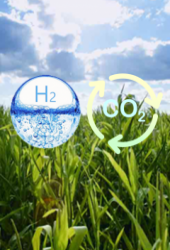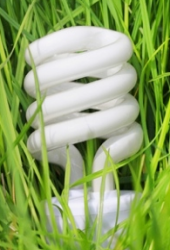Detail:
- ABSTRACT
The aim of the present study is to analyze perceptual response to an advertising and public relations campaign for the use of high-efficiency T5 fluorescent lamps. Our primary data collection tool was a questionnaire developed for the study sample of 400 people. The data from the questionnaire were analyzed by the SPSS software for Windows (Statistical Package for the Social Science). It is found that populations with different characteristics such as age, level of education, and occupation showed differences in perceptual behavior in response to advertising and public relations on energy saving campaigns at the level of statistical significance of values not more than 0.05. In addition, the perception of populations showed a relationship with their behavior, at the statistical significance level of 0.01. It is also found that the population sample of age between 19 – 25 years old was best able to recognize and remember the energy saving messages. It can be seen from the survey results that the most effective way to change energy saving behavior of the populations is to provide incentives such as discount promotions or rewards.
KEYWORDS : Perceptual behavior, Advertising, Public relations and Energy saving campaign - ABSTRACT
This research aims to study energy management in electronic industry by comparison of various energy management procedures such as ISO 50001, BS EN 16001, ANSI/MSE 2000. However, the comparison of energy management systems will be based on the Ministerial regulation, prescribing standard, criteria, and energy management procedures in designated factories and designated buildings B.E. 2552. The result of comparison will be presented and applied to the a case study of electronic manufacturer in order to improve long term solutions of energy management model.
KEYWORDS : Energy management system, electronic manufacture, ISO 50001, BS EN 16001, ANSI/MSE 2000. - ABSTRACT
Cleanroom is a controlled environment, where temperature, relative humidity, air velocity, air pressure and suspended particle are regulated for manufacturing products according to customer’s requirements. Because of steady humidity requirement, air conditioning systems have to be run at all time. According to the records of electricity consumption of voice coil motor industry, its consumption rate of year 2009 and 2010 for air conditioning systems in all cleanrooms had increased from 40.35% to 41.68% with respect to the total amount of the electricity consumption of the whole factory. Statistics and recorded abnormalities of all production activities were brought into analyses for determining correlations between temperature and relative humidity base on a simple linear regression model and Multiple regression model. Then the determined model with an assumption that temperature set point in each clean room was increased for 1 degree Celsius, and humidity set point in each clean room was increased for 1% was employed to simulate a plausible decrease in cost of electricity. It was found that the cost of electricity would be saved about 5,9695,556 baht within 24 months if increase temperature set point in each clean room for 1 degree Celsius, and also increase humidity set point in each clean room for 1%
KEYWORDS : Cleanroom ,Statistic Analysis, Voice Coil Motor, Cleanroom Energy Saving - Abstract
Preheating feed water prior to entering boiler through an economizer is one of many methods to save energy for boiler. The condensation of flue gas causes acidic solution in the condensate and corrodes the economizer tubes. Therefore economizers are not widely used in small boilers. The research study tries to raise feed water temperature above acid dew point temperature to prevent acidic flue gas condensation.
In the studies used boiler size 3,000 kg/h and liquefied petroleum gas as fuel. Flue gas temperature enters the economizer at 170 oC. The economizer is made of stainless steel. The design capacity is 11 kW. The economizer is 18.91 m2 of heating surface. The temperature of feed water in the feed water tank is 43 oC. The steam for preheating is 6 bar and 160 oC. The system is equipped with a flow rate, pressure and temperature measurement. The computer program is used to control flow rate of water through the control valves.
In the experiment, the temperature of the water entering the economizer is controlled at 70 oC. As a result, the economizer tube surface has the lowest temperature 82 oC which is above the acid dew point of the flue gas. Therefore the corrosion of the economizer tubes is controlled and the fuel saving is 3.3%.
Keyword : economizer, corrosion, dew point temperature, control valves - Abstract
This study investigated characteristic of particles generated during combustion and co-combustion of lignite coal and three types of agricultural by-products, including rice husk, bagasse, and palm oil fiber. Experiments were conducted using a lab-scale furnace connected to a cascade impactor to quantify amount of particles generated from combustion process at different size-range, and a Thermogravimetric-Differential Thermal Analysis (TG-DTA) connected to a Scanning Mobility Particle Sizer (SMPS) to identify combustion characteristics and to measure particles generated during combustion. Experimental results showed that combustion of bagasse generated the highest amount particles (58.3 mg/g fuel), followed by palm-oil-fiber (36.0 mg/g fuel), rice husk (12.6 mg/g fuel) and lignite coal (10.4 mg/g fuel); and the amount of the fine ash (dp1.1micron) for all combustion experiments. For all investigated biomass and lignite coal, combustion process started generating particle at similar temperature, while char combustion of lignite coal occurred at higher temperature than that of investigated biomass.
The highest particle number concentration was found at combustion temperature around 270oC for all investigated biomass, and approximately 400oC for lignite coal. For co-combustion of biomass and lignite coal, combustion temperature that generated the highest particle number concentration was found lower than lignite coal combustion, but higher than biomass combustion.
Keyword : biomass, coal, co-combustion, particulate formation
Volume : 9 Issue : 3 Year : 2012





